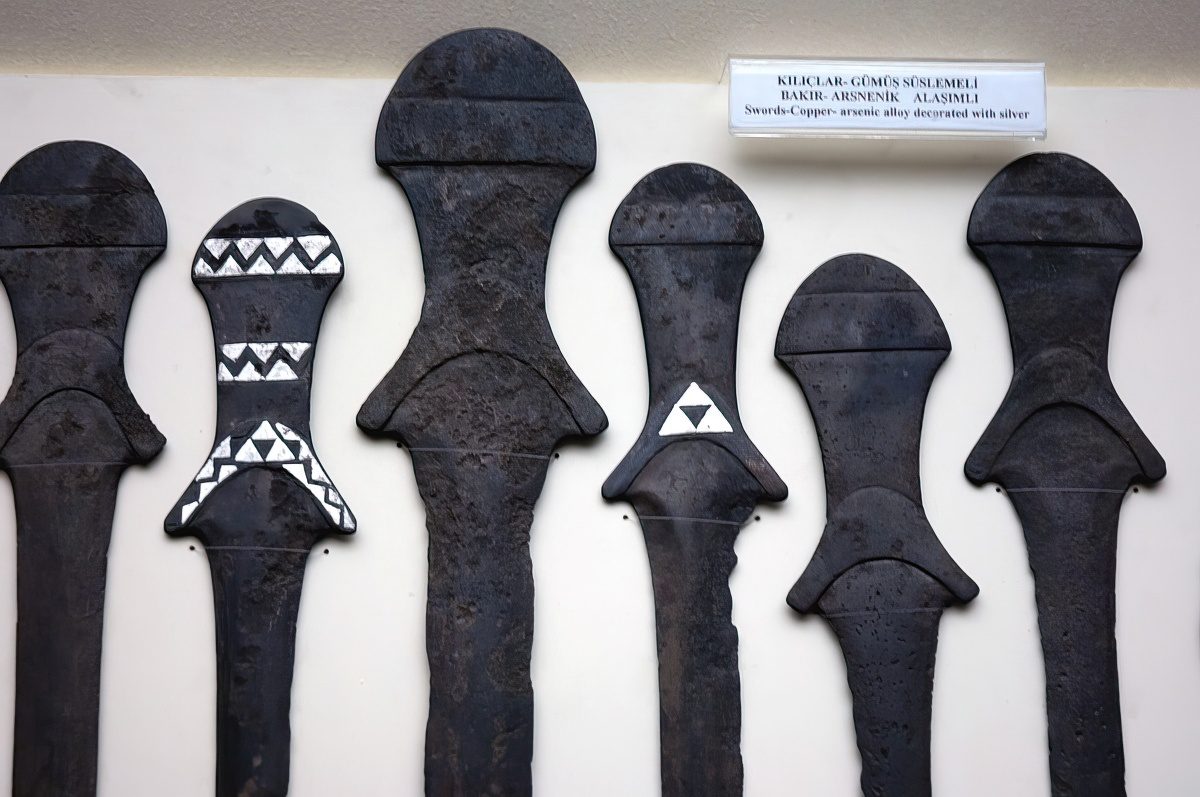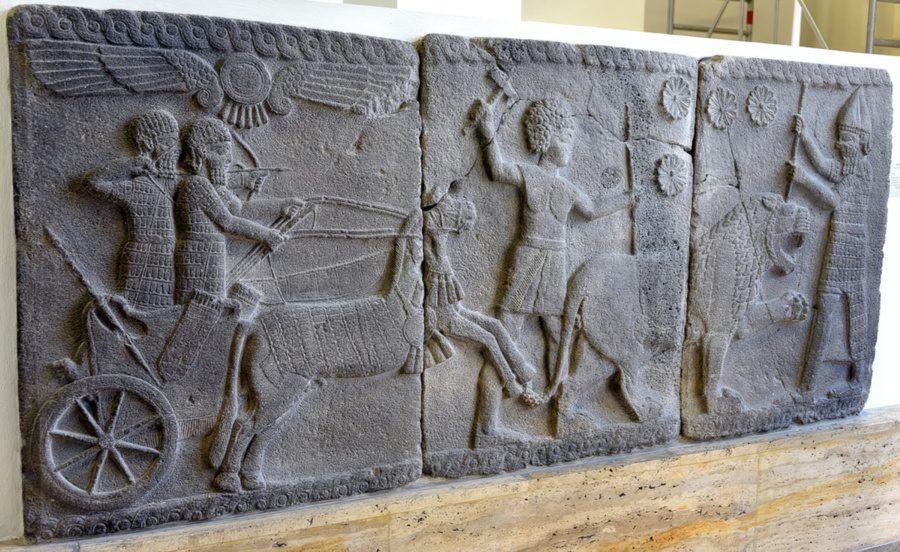The Oldest Swords in the World: Early Metallurgy in the Middle East

What’s in this article?
Of all the sword cultures in the world, Anatolia and Mesopotamia produced the first swords on record. During the Early Bronze Age, swordsmiths experimented with metallurgical processes to produce alloys that could withstand the rigors of war. Let’s take a look at a few of the oldest swords ever found by archaeologists and see how ancient Anatolians crafted these incredibly ancient weapons.
The World’s Oldest Swords
The oldest swords ever discovered are the Arslantepe swords. Found in modern-day eastern Turkey and dating to around 3300 BC, these first swords predate the production of bronze and are made of an arsenic copper alloy.

Nine swords were unearthed from the Royal Tomb complex of Arslantepe, an important cultural center of eastern Anatolia just west of Mesopotamia, the cradle of civilization. These swords demonstrate the exceptional craftsmanship of the time and it is possible that the smiths living in this region of the world invented this incredibly important weapon.
Blade and hilt were cast together in one piece and the lengths of the blades range from 45-60 centimeters (18-24 inches). The pommel is rounded at the bottom but is the same thickness as the rest of the sword. Laid flat, these swords were only about 4-5 millimeters thick (0.2 inches).
Three of the 5,000 year-old swords feature a decorative silver inlay, indicating their status as a weapon of the elite. It is likely that the swords were used as thrusting weapons as they were found in the same site as spearheads, but it is difficult to know exactly how the ancient Hittites would have employed these weapons.
It is possible that this type of sword was not used as a battle weapon at all. They could have been used for more ceremonial purposes or may have been wielded to indicate power and status in an early stratified society.
History of Arslantepe

The Arslantepe mound is an archaeological site that can be found 15 kilometers southwest of the Euphrates river. Supporting continuous habitation from the 6th millennium BC through the Late Roman Period, Arslantepe witnessed the rise and fall of numerous empires in this critically important region of the Middle-East.
Arslantepe is later associated with the Hittites, who gained power around 1800 BC. It is probable that the Hittites’ predecessors inhabited this site during an earlier era of history. Arslantepe serves as a case-study of state-building, and the Royal Palace complex provides evidence of the bureaucratic and societal stratification already present in this growing city.
Metallurgy
Copper is a highly malleable and soft metal, which makes it suitable for shaping but unsuitable for enduring stress. To enhance its strength, other metals must be added to it, resulting in the formation of an alloy.
Bronze, which is made of a combination of copper and tin, eventually became the most crucial alloy for early civilizations in Mesopotamia. However, before bronze, smiths were incorporating other metals such as arsenic into copper. The earliest discovered swords were crafted from this arsenic copper alloy, known as arsenical bronze, indicating that swordsmiths in the Middle East were experimenting with metallic compositions as early as 3300 BC.
Casting
The Anatolian swordsmiths who made the Arslantepe swords used a mold to cast these swords. Smiths employed the following process to make these swords:
They started by making a model of the sword out of clay. Next, smiths would use a heat-resistant, malleable material, like sand or clay, to form a mold around the model. They then super-heated this mold to harden it. The arsenic copper alloy was heated until it was liquid. When the mold had cooled, the molten metal was poured into the shape of the sword. After the arsenic copper alloy had hardened, the swordsmith would remove the mold, sharpening the sword and polishing it.
The sword is then ready to be wielded. As the Bronze Age progressed, smiths refined this technique, eventually replacing the arsenic copper alloy with bronze. This process demonstrates the highly advanced technical sophistication of metallurgy during this era.

Cousin Sword
Another sword that dates to shortly after the Arslantepe swords appears to be related to those discovered in the Royal Tomb complex. Made of the same arsenical bronze, this 5,000-year-old sword was discovered during unlikely circumstances.
While browsing the collection of a monastery museum, Vittoria Dall’Armellina, a graduate student at the Ca’ Foscari University of Venice, stumbled upon this amazing find in plain sight. The young Italian recognized the antiquity of the sword immediately even though the museum had wrongly attributed it as a medieval artifact.
Having been gifted to Father Serafino Jamourlian’s monastery on the Venetian Island of San Lazzaro degli Armeni, one of the oldest swords in the world was originally unearthed at Kavak, near the site of the former Greek colony Trebizond, just southeast of the black sea.
After its discovery, an Armenian art collector acquired the sword and gifted it to a monk by the name of Ghevont Alishan. When Alishan died, the Mekhitarist monastery on Saint Lazarus Island in the Venetian Lagoon acquired his belongings and the sword, and wrongly inferred that it was from medieval times.
The appearance of the sword resembles those of the Arslantepe mound, as it is cast in one piece using a mold. The metallic composition is the same, and these similarities indicate how widespread sword technology was becoming around West Asia around the turn of the Third Millenium BCE.




